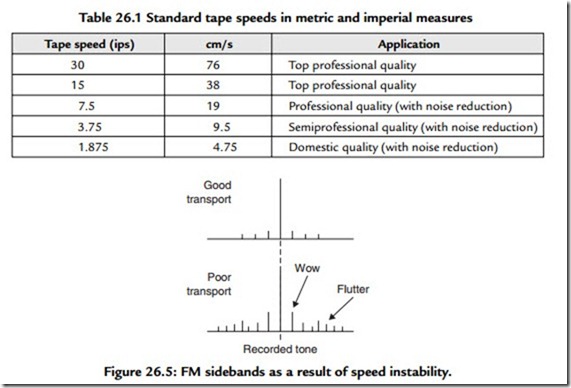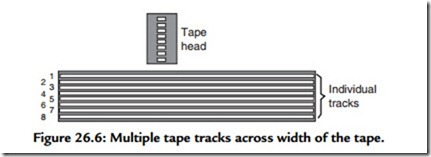Speed Stability
Once standardized, the speed of the tape must remain consistent over both long and short terms. Failure to establish this results in audible effects known, respectively, as wow and
flutter. However, these onomatopoeic terms relate to comparatively coarse effects. What is often less appreciated is the action of speed stability upon the purity of audio signals— a fact that is easier to appreciate if speed instability is regarded as a frequency modulation effect. We know that FM modulation results in an infinite set of sidebands around the frequency-modulated carrier. The effect of speed instability in an analogue tape recorder may be appreciated in these terms by looking at the output of a pure sine tone recorded and played back analyzed on a spectrum analyzer, as shown in Figure 26.5. Note that the tone is surrounded by a “shoulder” of sidebands around the original tone.
Happily, the widespread adoption of digital recording has rendered much of the aforementioned obsolete, especially in relation to two-track masters. Where analogue tape machines are still ubiquitous (e.g., in the case of multitrack recorders), engineering excellence is a necessary byword, as is the inevitable high cost that this implies. In addition, alignment and calibration to recognized standards must be performed regularly (as well as regular cleaning) in order to ensure that multitrack tapes can be recorded and mixed in different studios.

